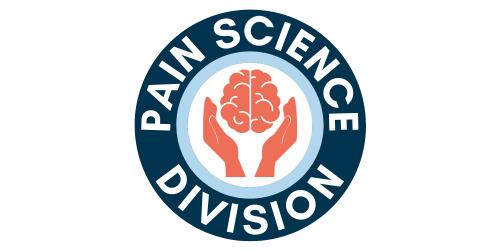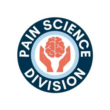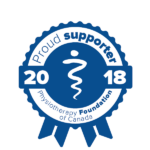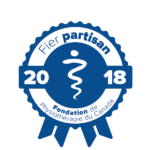Is advocacy part of your role?

by Lesley Singer, PT
The Canadian Pain Task Force was mandated to review the status of pain care in Canada, and to advise the government regarding evidence and best practices for the prevention and management of chronic pain. Pain Advocacy is a movement to improve the lives of people who live with chronic pain through communication with all the relevant stakeholders concerned with pain management. Communication is a key word, and advocacy can take many forms. We, as physiotherapists are key stakeholders since most people see a physiotherapist for pain. We can advocate on behalf of our patients to ensure the actions recommended by the task force take effect. I joined others from the Pain Science Division (PSD) to review the recommendations made by the task force. We prioritized the recommendations based on the ability of our discipline to act in support of the task. We will now as an organization (CPA) take the recommendations and decide on a plan for how our discipline can play a lead role. This has taken many discussions and reflections on each of our parts.
I wear many different hats in my life, and this gives me a unique perspective as an advocate for better pain management. My life experiences have brought me to where I am today. I start with myself as a person with life experiences, followed by my life as a person who successfully lives with chronic pain. I am a clinician, who helps people manage their chronic pain better, as well as an educator of pain management. I have had chronic hemifacial neuropathic pain for 20 years. I am also a physiotherapist. I returned to school at 34 years old following a 6-month experience with a newborn, living in NICU. He was intubated and he used to cry all the time, setting off the respirator alarm. I always thought he must be in pain, but the staff said he was not. We have come a long way from there, in our understanding of pediatric pain through better knowledge and advocacy from parents and caregivers. This experience sent me back to school to become a physiotherapist, after seeing my son’s physiotherapist work with him regularly. I wanted to work in healthcare because I learned a lot for that little guy over his short life. I believe we often learn to advocate based on our lived experience.
My own experience with chronic pain began in 2002 with an intense case of trigeminal neuralgia 2 years after I had a meningioma resection followed by gamma knife radiation. I had only been a physio for 7 years at that time and because I loved my work, my goal was to return. I researched various treatments to help me achieve my goal. I was fortunate to see an interdisciplinary management team who believed in patient centered care. I was a partner on that team to discuss the treatment options, set goals and choose the best treatment options for me. I needed follow up for many years, as I struggled with the lowest points in my life. I had intractable pain until my balloon compression, which changed my pain to anesthesia dolorosa. I was on many different opioid treatments throughout the years. I finally searched for a neurosurgeon to implant a motor cortex stimulator. It took a year of advocacy on his part to the government to have the request accepted. I was still a patient at the pain center at that time, and my doctor asked me to partner with him and meet with his medical students whom he was mentoring, to talk about my story. I met with several groups of 8-10 and we had conversations. I told them my story and they would ask questions. Some of the students followed me for 6 months to my medical appointments. I also met with pharmaceutical reps to talk about opiods. This was my first official role in advocacy. I did not know at that time, where this would lead, as well as how it would help me to self-manage my own pain. I was an active person all my adult life which helped me, however I suffered from somnolence and chronic pain fog which made it impossible to maintain a full-time position in a busy private clinic. I realized that I would never return to the “old me” and I needed to become comfortable with the “new me”. This was a big part of my pain self-management.
I became more involved with advocacy, I continued as a part time clinician. I returned to school to get a master’s degree and more education about pain management. I wanted to understand my own pain, but also to understand the many patients who would return over the years for help with their chronic pain issues. I became an educator of clinicians from many healthcare disciplines as well as doctors who are interested in gaining knowledge in the interdisciplinary management of pain. Advocacy is a lot about communication. It has been 10 years now that I am an educator in the certificate in chronic pain management. There are often students who talk about their own struggles with pain. I enjoy reading the rich discussions we have in our discussion board. It is interdisciplinary and so each of the stakeholders can not only learn about their unique roles but advocate for their own role. They often say that it has helped them problem solve in their practice. The more you discuss pain the more you understand it and the more you need to advocate for better treatment. I often hear the complaint from clinicians that they don’t have enough time to do evidenced based management. We need to help make that happen. We need to talk to insurers, policy makers and clinic owners to make this happen. We need to suggest solutions. We need to talk to other disciplines to see how we can make pain management better and accessible for all persons living with pain. I have found conferences a great place to network. You can attend ones with interdisciplinary delegates. Today, people who live with pain also attend. Apart from the delegates, you have the exhibitors who can contribute information about pain from their perspective.
I joined the chronic pain network in 2014 and partnered with researchers in their projects. I was always advocating for the addition of clinical input in their teams. We had added the voice of the person living with pain; however, I can see barriers which exist in making their project a clinical success. If it does not fit in with the healthcare system, then how can it work? There is a missing link in the knowledge to action cycle. I enjoy the participation in research projects and again I realize there is a range of patient participation. Some projects have taken on a token partner perhaps to get funding from a group that requires a patient partner. Other projects really take advantage of the life experience of the partner and then you are a team member in the truest sense of a partnership. I feel it is important when you have partnered throughout the project, and if you agree, recognized as an author in the publication. I am a coauthor on a publication for guidance on authorship. We need to advocate for patient partners to be compensated as well as recognized for their part. Researchers start to recognize patient partners or clinical partners, and can then contact you to be part of a project well suited to your experience. I am a team member and, and co-investigator in a 5-year project about the pain knowledge of “entry to practice” physiotherapists. We are team of many different stakeholders. We have looked at the competency requirements, and then we will look at where we are with respect to these competencies across Canada now, and how we can improve our education to have the physiotherapist of the future graduating with these competencies. This is very much in line with my three separate hats worn together.
I took part in grant reviews for the CIHR to look at the project through the eyes of a patient partner. My role was to review the requirements for patient partnering, and see if the proposal included them. I was always looking at the projects through the eyes of the patient. I believe we need to look at the projects through the eyes of the clinician as well. We are key stakeholders, and we need to advocate for ourselves. I believe that to improve pain management, we need everyone’s input. Pain management is a large puzzle which needs all the pieces to be complete. If you are interested in pain advocacy the Global Alliance of Partners for Pain Advocacy (GAPPA) is creating partnerships between people with lived experience of pain, patient advocates, researchers, and clinicians around the world, to advance the study, understanding, and treatment of pain. It is within the International Association for the Study of Pain (IASP). I would like to see this happen here at the Canadian Pain Society. This can my next project!



